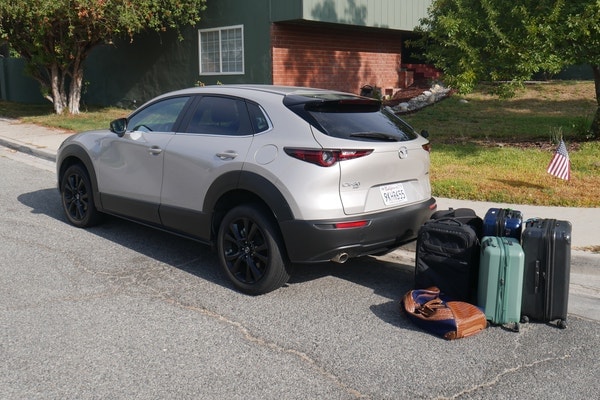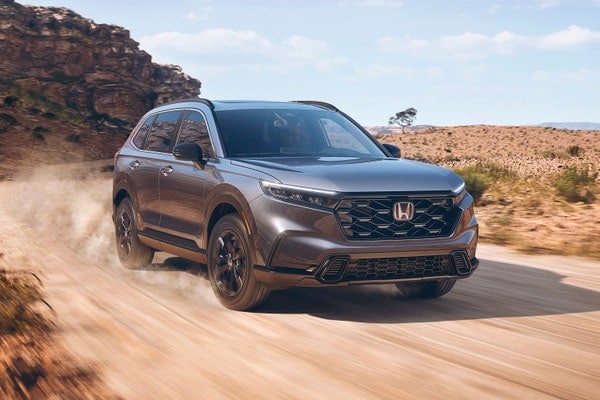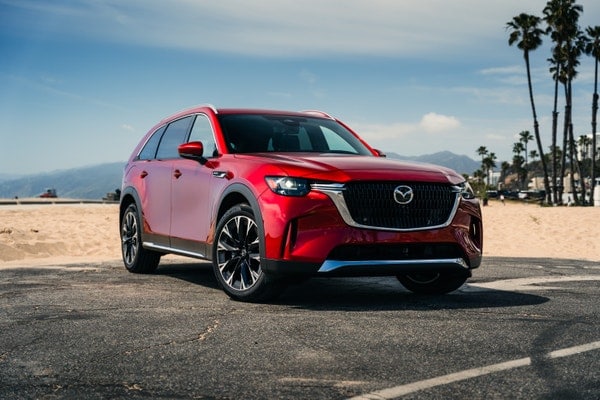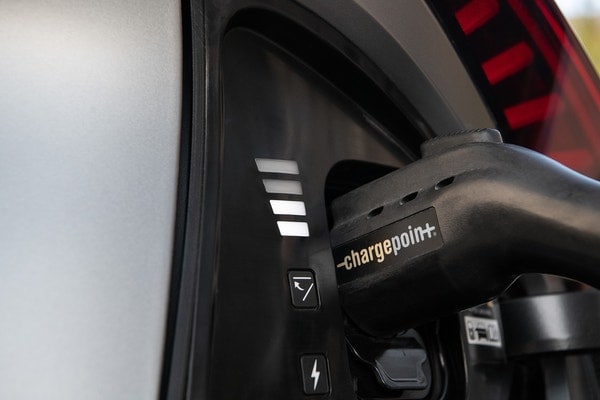The largest and most expensive vehicle in Mazda’s stable, the CX-90, is a viable budget alternative to the established luxury brands. It's powerful and athletic, yet it balances its handling capabilities with a compliant ride. But there is a trade-off, and it’s one that many three-row SUV buyers are sensitive to: interior packaging. The CX-90 has a smaller third-row seat and cargo area than most competitors. For families needing maximum space, that may be a deal-breaker.
Edmunds spotlight: Diverse powertrain choices
Mazda offers CX-90 buyers three powertrain choices. The 3.3 Turbo model has a turbocharged 3.3-liter inline-six that generates 280 horsepower and 332 lb-ft of torque. In the Turbo S, that same straight-six is tuned to deliver 340 horsepower and 369 lb-ft. That’s on premium fuel, although Mazda takes the unusual step of also publishing output on regular gas — 319 horsepower and 369 lb-ft are hardly a punishment for savings of a buck a gallon. For shoppers wanting to save more at the pump, there’s the CX-90 plug-in hybrid. It pairs a turbocharged four-cylinder engine with a plug-in hybrid system to produce a total of 323 horsepower and 369 lb-ft. On a full battery, the PHEV can travel 25 miles on electricity alone before it switches over to its gas engine and drives like a regular hybrid.
Competitors to consider
They lack the Mazda’s dynamic brilliance, but the Kia Telluride and closely related Hyundai Palisade are our favorites in this class. Both offer impressive lists of standard and optional features and are clothed in equally expressive styles. Toyota’s Grand Highlander also tops the CX-90 in third-row and cargo space, offering a rear seat that even adults will find comfortable.






